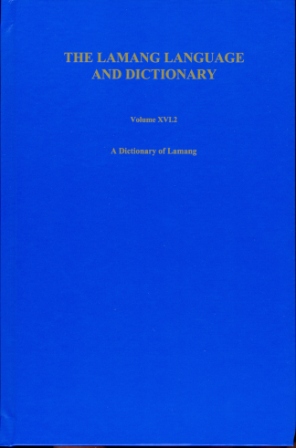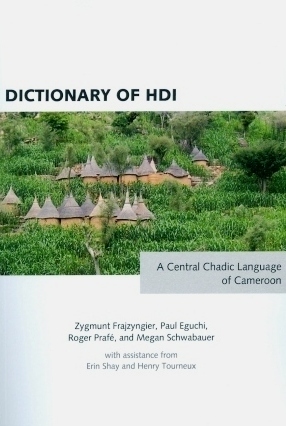




The two volumes of The Lamang Language and Dictionary complete a long-term documentation project on this Chadic language which is spoken in north-eastern Nigeria’s Borno and Adamawa States. The author began the research project in the late 1960s and continued to work on it, intermittently and with long periods of inactivity, until early 2014. The language belongs to the Central (also called Biu-Mandara) branch of the Chadic language family, which in turn is part of the Afroasiatic macro-family of languages.
Based on figures of 1993, the population of speakers is given as 40,000 (www.ethnologue.com) but may be considerably higher by now. Its sociolinguistic status in terms of language vitality or endangerment is described as vigorous, meaning that the language is used for face-to-face communication by all generations and the situation is sustainable. With the two part volumes, a rich and linguistically exciting human language has been comprehensively documented and is thus saved from oblivion – hopefully also for a more immediate benefit to its speakers.
Volume XVI.1 is a revised descriptive grammar with some elements of Lamang-Hdi comparative phonology and grammar (Chapter 3) and a comparative lexicon (Chapter 4). Hdi is Lamang’s closest sister language, spoken in and around Tourou (Turu) in adjacent parts of northern Cameroon.
In 1994, the author published traditions and specimens of oral literature from Gwàɗ Làmàŋ speaking peoples, titled Our People’s Own (Ina Làmàŋ). The edition features full texts, including English translations and annotations (see under additional material).
Volume XVI.2 contains a comprehensive Lamang-English dictionary. Both volumes are available in a set at a reduced price (ISBN 978-3-89645-294-8), see the links at the bottom.
Under these links you will find further descriptions of Central Chadic / Biu-Mandara languages and cultures:
The Chadic language family is a branch of Afro-Asiatic, and embraces more than 150 languages, whose bibliography is quite rich for number of publications. Since more than half of these languages are not so well documented, we should be grateful to the author for this recent publication, which is the latest work on this language he started to study in the late 1960s (p. 7), with a project which continued intermittently until early 2014.
[...] one may say that the dictionary as well as the grammar does contribute in an excellent way our knowledge of this small language: Lamang, i.e. even more to be valued since the research conditions are presently not favourable in this border area of Nigeria and Cameroun. Hopefully the situation may change in order to shed more light on those Chadic languages spoken in this region.
Sergio Baldi in Orientalistische Literaturzeitung, 2017, 112/1, 92-93
© 2025 by Rüdiger Köppe Verlag – www.koeppe.de